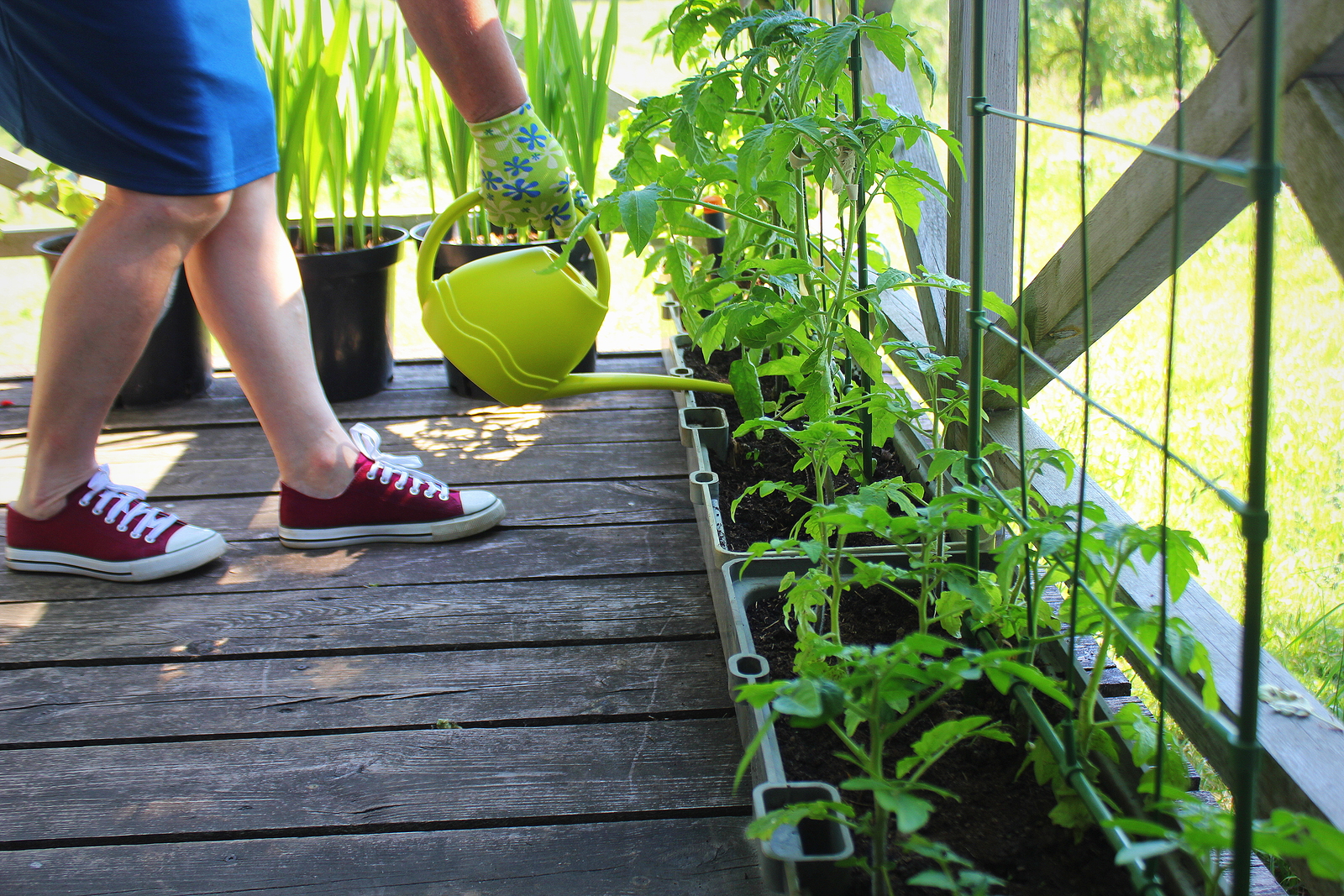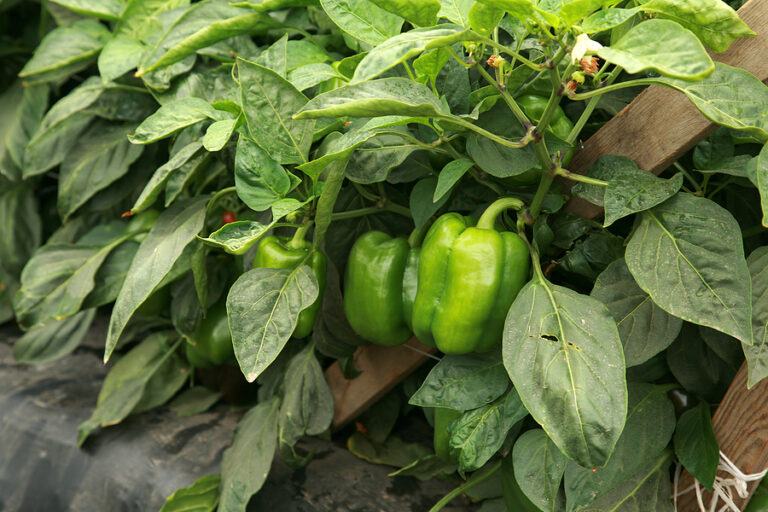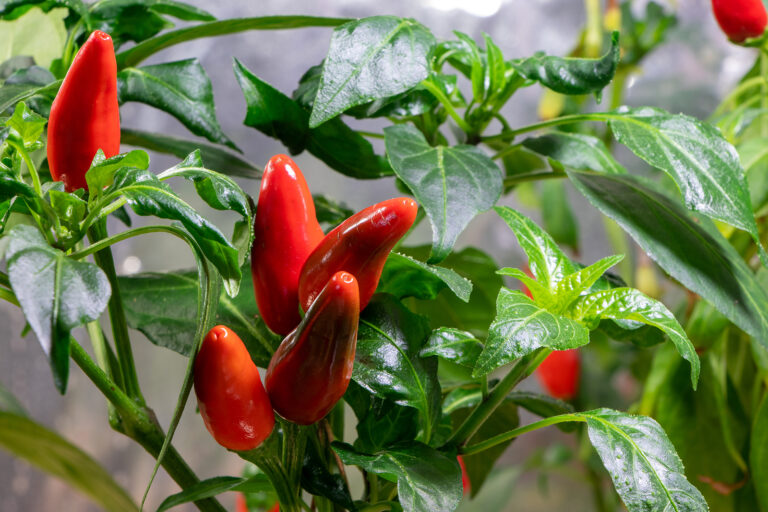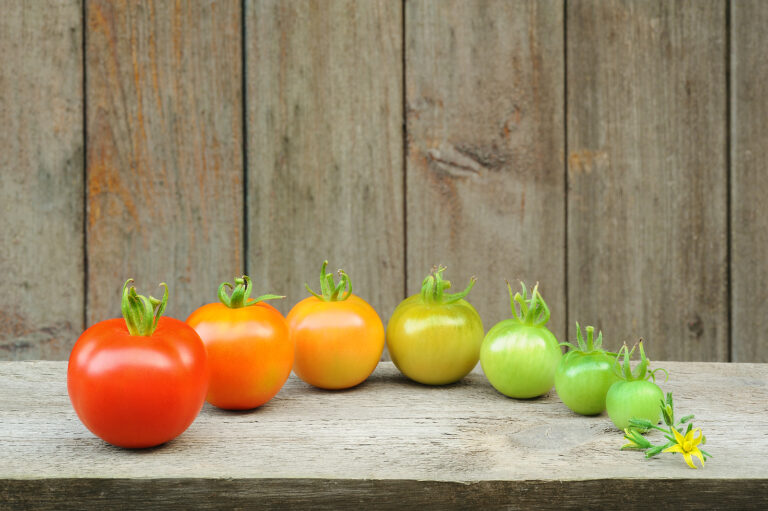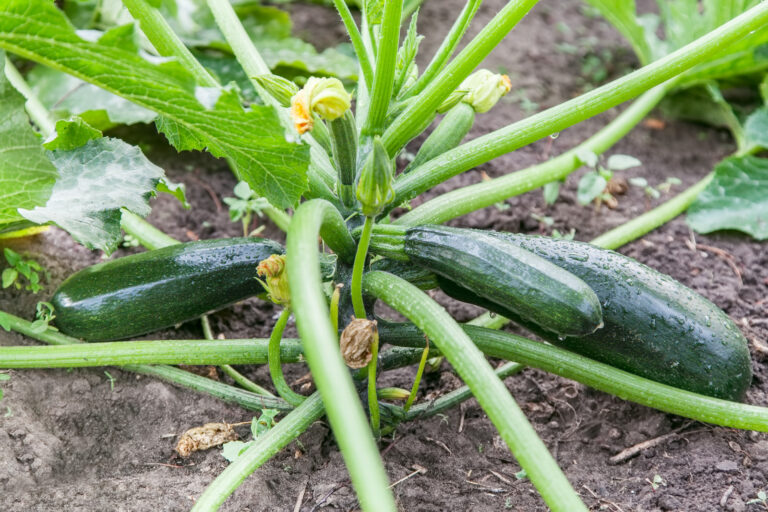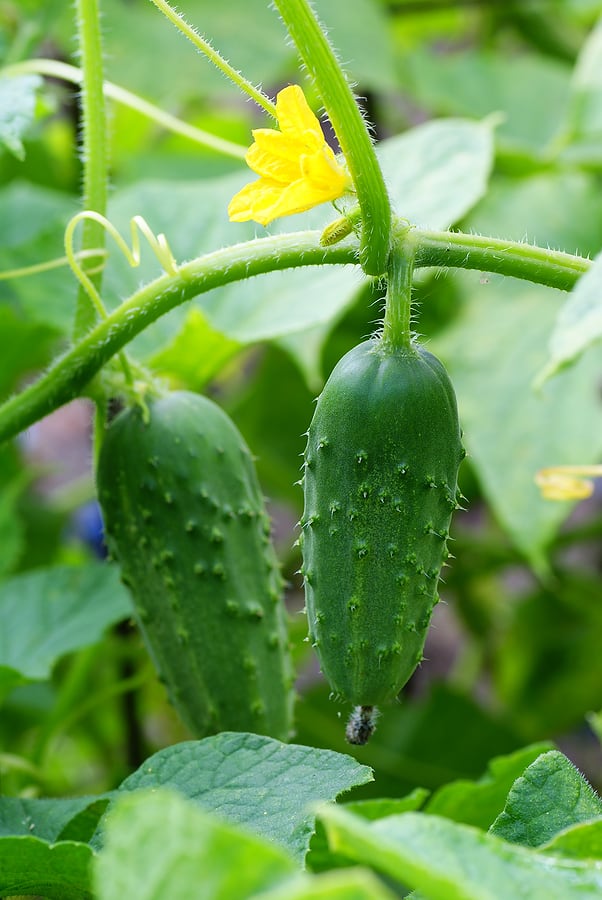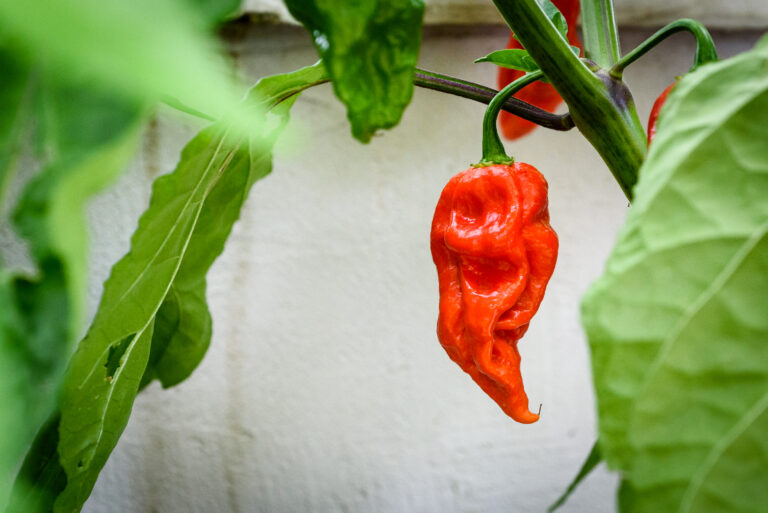Getting Started With Tomatoes: A Gardener’s Guide to Success
Growing tomatoes is one of the most rewarding experiences in the garden. After decades of growing my own tomatoes—experimenting with different varieties, dealing with late frosts, and perfecting my planting schedule—I’ve learned a few key lessons that can help beginners get started with confidence.
Getting Started with Tomatoes
I’ve started tomatoes from both seeds and nursery seedlings, and I’ve found that home-started plants often grow stronger because I can control their early environment.
Most gardeners grow tomatoes from seedlings started indoors, giving them a head start on the growing season. In my experience, the best results come from planting tomato seeds indoors about 6 to 8 weeks before the last expected spring frost. I’ve found that using a heat mat to keep the soil warm (around 70-75°F) speeds up germination significantly.
Once the risk of frost has passed, harden off your seedlings by gradually exposing them to outdoor conditions over the course of a week. I usually set mine outside in a shady spot for a few hours at first, then increase their time outdoors each day. This prevents transplant shock and sets them up for success.
Transplanting Tips
Over the years, I’ve learned that transplanting tomatoes deeply—burying part of the stem—leads to stronger root development and healthier plants.
- Tomatoes love warm soil. I’ve had the best results transplanting them 1 to 3 weeks after the last frost, when the soil is at least 60°F.
- If an unexpected frost threatens, I cover my plants with garden fabric or even an old bedsheet overnight.
- When planting, I bury the stem up to the first set of leaves—this encourages strong root growth.
Tomato Growing Timelines
One of my biggest gardening mistakes early on was choosing only late-season tomatoes, leaving me waiting months for a harvest. Now, I always plant a mix of early, mid, and late-season varieties for a continuous supply.
Not all tomatoes mature at the same rate. If you want a continuous harvest, mix different types:
- Early-season tomatoes (50–60 days to harvest): Great if you want a fast start.
- Mid-season tomatoes (60–80 days): A solid choice for main-season production.
- Late-season tomatoes (80+ days): Often the most flavorful but require patience.
For gardeners in warm climates (USDA Zone 10 or warmer), tomatoes can be grown in fall and winter instead of summer, when extreme heat can be an issue.
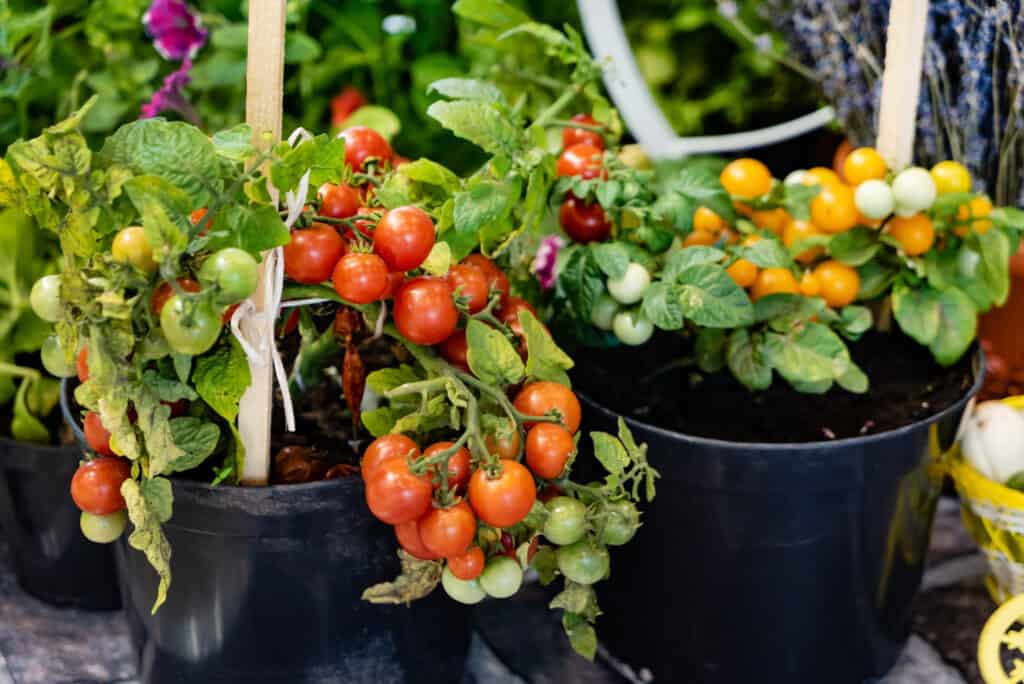
Choosing the Right Tomato Type
I’ve grown tomatoes in both small raised beds and sprawling backyard gardens, and choosing the right type makes all the difference in plant health and yield.
Bush (Determinate) Tomatoes
Best for small spaces, bush tomatoes stop growing once they flower. I recommend these for container gardens or raised beds. A couple of my go-to varieties include:
- ‘Roma’ for sauce-making
- ‘Bush Early Girl’ for a quick harvest
Vining (Indeterminate) Tomatoes
If you have the space and want a continuous harvest, vining tomatoes are the way to go. These can get 6 feet or taller and require staking or caging. I’ve found that pruning off excess suckers (the shoots between the main stem and branches) helps keep plants manageable. My favorite varieties:
- ‘Sun Gold’ for sweet cherry tomatoes
- ‘Cherokee Purple’ for incredible heirloom flavor
More Ways to Classify Tomatoes
I used to think all tomatoes were red until I started growing heirlooms—now my garden is filled with purple, yellow, and even striped tomatoes!
Beyond growth habits, tomatoes can also be classified by:
- Size and shape: From tiny currant tomatoes to massive beefsteaks
- Color: Red, pink, yellow, green, black, striped, and more
Best Tomato Varieties by Use
Through trial and error, I’ve found that choosing the right tomato for its purpose—whether for slicing, snacking, or sauce—makes meal prep much easier.
✅ Cherry Tomatoes (¾–1½ inches, great for snacking & salads):
- ‘Sweet 100’ – Prolific and sweet
- ‘Sun Gold’ – Hands down, my favorite for flavor
- ‘Matt’s Wild Cherry’ – Tolerant to disease and great for organic gardens
✅ Cooking Tomatoes (meaty, less juice, great for sauces & canning):
- ‘San Marzano’ – A classic for sauce
- ‘Amish Paste’ – Thick flesh, rich taste
- ‘Juliet’ – Reliable and productive
✅ Slicing & Eating Tomatoes (large, juicy, best fresh):
- ‘Big Beef’ – Consistently excellent flavor
- ‘Brandywine’ – A flavorful heirloom variety
- ‘Celebrity’ – Disease-resistant and easy to grow
Roundup Summary
Over the years, I’ve learned that tomatoes thrive when given the right conditions—warm soil, consistent watering, and good air circulation. But most of all, growing tomatoes is about experimenting and enjoying the process!
Tomatoes are incredibly rewarding to grow, but they do take some planning. Whether you’re growing in containers, raised beds, or sprawling backyard gardens, there’s a tomato variety for you.
What tomato varieties have worked best in your garden?
Tomato Growing Hub
Start here: The Ultimate Tomato Growing Guide: From Seed to Harvest
Growing Tips
- Getting Started with Tomatoes: A Gardener’s Guide to Success
- How to Choose a Tomato for Your Garden
- Growing Early-Season Tomatoes for Great Taste
- Heirloom and Hybrid Tomatoes
Planting Tips
- Tomato Seed Starting Tips
- Mastering Tomato Seed Starting: How to Grow Strong and Healthy Plants Indoors
- When to Plant Tomatoes: A Gardener’s Guide to Timing and Success
- Plant Tomatoes for a Thriving Crop: Sun, Soil, and Spacing
- How to Transplant Tomato Seedlings: A Gardener’s Guide
- Growing Tomatoes in Containers
Tomato Care
- Watering and Feeding Tomatoes: Expert Tips for a Healthy, Productive Crop
- Best Ways to Support Your Tomato Plants
- Pinching and Pruning Tomatoes: A Gardener’s Guide to Healthier, More Productive Plants
- How to Prune Tomatoes
- Grow Tomatoes on Stakes
- Best Companion Plants for Thriving Tomatoes: What Works & What to Avoid
Pest & Disease Control
- Tomato Growing Problems: Pests, Diseases, and Solutions
- How to Prevent Blossom Drop — Tomatoes and Peppers
- How to Identify Early Blight, Late Blight, and Leaf Spot on Tomatoes
Harvest & Preparation
- When and How to Harvest Tomatoes for the Best Flavor
- How to Ripen Tomatoes
- Planting Tomatoes for a Long Harvest
- Planting Tomatoes for a Fall Harvest: How to Grow Fresh Tomatoes Before Frost
- Tomato Flavor Explained
- Nine Ways to Cook and Serve Tomatoes
Garden Planning Books at Amazon:
- Tomato Grower’s Answer Book
- Vegetable Garden Almanac & Planner
- Kitchen Garden Grower’s Guide Vegetable Encyclopedia
- Vegetable Garden Grower’s Guide
Books to help you grow:

